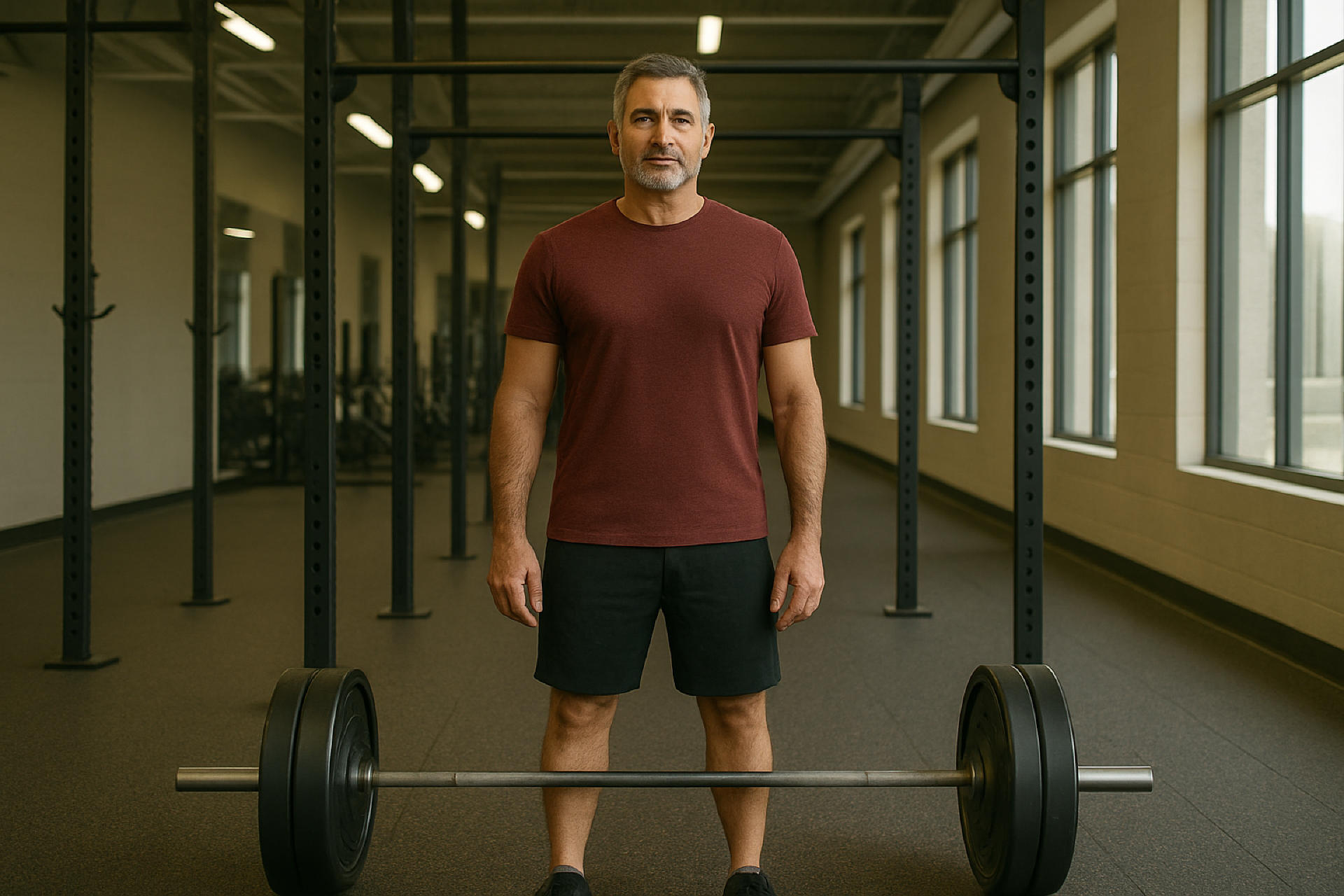Here’s the truth: You don’t need to be jacked, join a CrossFit box, or spend hours each day lifting to be strong enough to defend yourself or protect your community. You just need to show up three times a week, move intentionally, and build the kind of real-world strength that makes a difference when it counts.
This is not about aesthetics. It’s about readiness. It’s about resilience. And it’s 100% within your reach—even if you’re new to working out, don’t have much time, or feel a little intimidated by the weight rack.
This program is simple, scalable, and made for Jews who want to be harder to harm.
Why Strength Training Is Self-Defense
Martial arts skills are great—but what happens when your body can’t back them up? Strength and conditioning give you the engine to power your skills. They let you:
- Pick someone (or something) up when it matters
- Keep moving under stress
- Stay stable on your feet
- Reduce the risk of getting sidelined by injury
And let’s be honest: there’s something deeply Jewish about cultivating inner discipline and outer strength. Gevurah isn’t just spiritual—it’s physical, too.
Training Philosophy
Forget bodybuilder splits or influencer nonsense. We’re building functional strength: the kind that helps you drag your friend to safety, scramble over a fence, or just keep your cool under pressure.
Three workouts per week. 45–60 minutes each. No frills, just smart programming.
Each session includes:
- Warm-Up (5–10 min)
- Strength Work (25–30 min)
- Conditioning or Mobility (10–15 min)
- Cool-Down (5–10 min)
Three Days a Week to Get Dangerous (in a Good Way)
Day 1: Push Power + Core
Warm-Up:
- Jumping jacks or jump rope – 2 min
- Dynamic stretches: shoulder rolls, leg swings, arm circles
Strength:
- Goblet Squat or Bodyweight Squat – 3x8–12
- Push-Ups (or incline variation) – 3 sets to fatigue
- Overhead Press (dumbbells or resistance band) – 3x10
- Plank – 3x30–60 seconds
Conditioning:
3 rounds of:
- 30 sec mountain climbers
- 30 sec jumping lunges (or step-backs)
- 30 sec rest
Cool-Down:
- Child’s pose, shoulder and hip stretches, deep breathing
Day 2: Pull Strength + Steady Cardio
Warm-Up:
- High knees, hip circles, arm swings – 5 min
Strength:
- Romanian Deadlifts (dumbbell or kettlebell) – 3x8
- Bent-Over Rows (dumbbell or band) – 3x10–12
- Glute Bridges – 3x12
- Bird-Dogs – 2x8 per side
Conditioning:
15-minute steady state:
- Brisk walking, cycling, shadowboxing, or rowing
- Stay at a moderate pace you can maintain
- Focus on breathing and rhythm
Cool-Down:
- Back, glute, and hamstring stretches
- Foam rolling (if available)
Day 3: Total Body + Power & Agility
Warm-Up:
- Quick foot taps or ladder drills – 2–3 min
- Arm and leg mobility work
Strength:
- Split Squats or Reverse Lunges – 3x8 per leg
- Chest Press (bands or dumbbells) – 3x10
- Renegade Rows – 3x6 per side
- Farmer’s Carries – 3x30 sec (moderate load)
Conditioning:
10-minute EMOM (Every Minute on the Minute):
- Minute 1: 10 kettlebell swings or jump squats
- Minute 2: 5 burpees Repeat for 5 total rounds
Cool-Down:
- Stretch hips, chest, and lats
- Deep breathing to recover
Equipment You’ll Need (And What to Do If You Don’t Have It)
Start where you are. You can do this entire program with:
- A pair of dumbbells or kettlebells
- A mat
- Resistance bands
No gear? No problem. Use bodyweight exercises until you’re ready to scale up. Swap in wall push-ups, step-ups, or couch-based rows if needed. Older adults or those dealing with joint issues? Low-impact options are baked into the plan.
Train Smart, Not Reckless
Form comes first. Pain is a signal. Progress isn’t linear, and that’s okay.
Start light, stay consistent, and ask for help if you need it. This is training for life, not just a season.
- If it burns, great.
- If it stabs, stop.
- If it overwhelms you? Scale back and try again tomorrow.
What You’ll Get (If You Stick With It)
Here’s what three weekly workouts will do for you:
- Stronger muscles to push, pull, and hold your ground
- Greater endurance for emergencies and daily life
- Improved mobility and stability—so you’re harder to knock down
- Better focus and stress control
- A stronger, more confident version of yourself
You’ll be ready. Not paranoid. Not panicked. Ready.
The Bottom Line
We live in a world where preparedness matters. But you don’t have to become a Krav Maga black belt overnight. You just need to start showing up for yourself, three days a week.
Build the kind of strength that lets you walk through the world with confidence—and protect what you love.
Muscular Judaism isn’t (just) about big biceps. It’s about reclaiming our bodies as sacred vessels for service, resistance, and survival. So let’s train like it.
